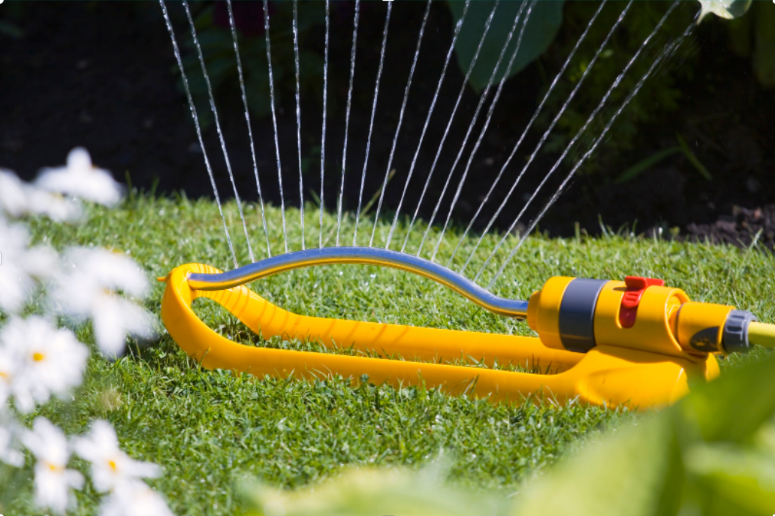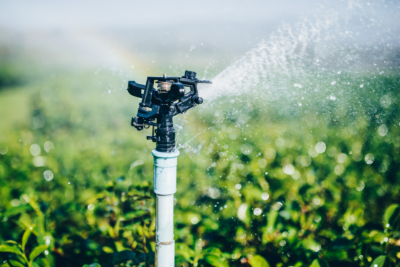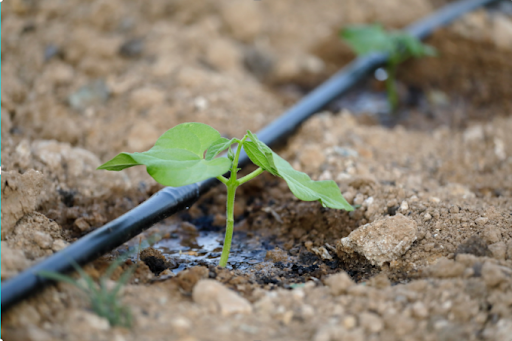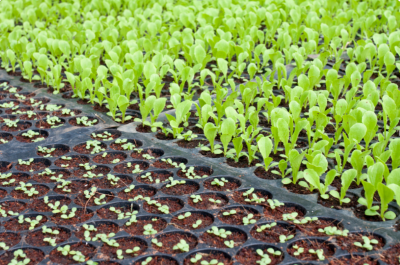Watering, succession planting, planning the Fall garden
Guest Contributor: Cassey Anderson, CSU Horticulture Agent


There are many ways to successfully water a vegetable garden; overhead, drip irrigation, flood, hand watering. They all have benefits, although there are drawbacks for each as well, it’s up to your own space, the conditions and requirements of your garden space to determine what will work best for you. The basic principles of irrigation are that you want between 1-2” of water down on the crops and going 6-8” deep in the soil each week. Higher temperatures, dryer weather will mean a greater need for water, and alternately cool temperatures or precipitation will mean you can ease off the watering. It’s always good to test your soil before watering. Our fingers are excellent tools for determining soil moisture: put your finger in the soil up to your first knuckle and feel if the soil is moist underneath. If it is, you can likely hold back unless you’re seeing drooping from heat/dry. Be sure to let the soil dry out a little between irrigation as most vegetables don’t appreciate wet roots!

OVERHEAD IRRIGATION

Overhead pros: this is one of the easiest, and lowest cost ways to water a garden, a hose and a sprinkler head that you can move around the space. Different types of sprinkler heads put water down differently. Fan sprinklers can cover a lot of area with a gentle large droplet type. Spot or circle sprinklers can put a lot of water down in a short period. In-ground systems can cover thoroughly if you’re converting a turf area into a vegetable garden. Overhead sprinklers can be especially effective in any garden system in helping to guarantee good seed germination and emergence. With an overhead system it can be easy to determine how much water you’re putting down (using several straight sided containers such as a tuna tin).
Overhead cons: overhead can be wasteful, as much of the water can be lost to evaporation particularly in drier climates, or on windy days. Overhead irrigation can also promote disease in a plant. When the leaves and stems are regularly wet disease pathogens such as fungus, virus or bacteria can reproduce more effectively. Additionally, as plants get larger leaves and stems may grow up in front of the sprinklers potentially blocking uniform water movement to the ground.
DRIP IRRIGATION

Drip irrigation cons: While much more efficient, drip is not a drop and go option, emitters need to be checked and maintained throughout the season and in between seasons. If you have hard water the emitters can get clogged as well. The system also will cost some money to get established. The components are plastic but are built with food-grade materials. They can be susceptible to UV damage. The solid plastic tubing will have more longevity than soaker hose lines.
FLOOD IRRIGATION
Flood irrigation: much less common, but a very good way to get a lot of water in a space in a short amount of time. This is the least efficient system available for vegetable gardens, but common in some areas in the west with irrigation systems established. It can be made more efficient because the runoff water can be re-used. The ground will need to have a regular downward slope.
HAND IRRIGATION
Hand Irrigation: hand irrigation is great if you have a very small area, and/or if you’re around a lot. It’s more effective for container gardening than for larger garden spaces. You need to ensure you’re really wetting the entire soil to at least a 6-8” depth, which can take a while if you’re using a watering can or even a hose with a sprayer. It’s a great option for getting seedlings established in their first 1-3 days after transplant.
Finally, I wanted to discuss two of the best options for a successful full-season vegetable garden: succession planting and planting for a fall garden.
SUCCESSION PLANTING

Succession planting is a great way to maximize the duration of harvest. It involves planting the same crop over the course of many weeks in the same space. So instead of planting 5 rows of lettuce that will all mature at the same time, you can plant one row every two weeks and get a longer season of harvest (plus not get overwhelmed with produce!). Don't forget to make a plan to Donate! Plant two rows each time, and harvest one for your household needs, one to donate.
FALL PLANNING
Fall gardens are also an excellent way to extend your harvest, and another form of succession planting. Many of our spring crops do well as a fall crop as well. Leafy greens, carrots, beets, peas etc. can all be planted in early to mid-July in most areas for a successful harvest in the fall before hard frosts begin. June is a great month to begin planning, ordering seeds and outlying your garden space. Because July is a very warm month you may need to take extra care with the seedlings to ensure good germination. Preventing soil crusting from drying out is very important for successful germination. This can be achieved with row cover, a thin layer of sand (prevents crusting), or regular light watering.
As always, reach out to your local Extension office with additional questions and for further resources. Happy Gardening!

Gardening in Colorado? Check out Grow & Give www.growandgivecolorado.org and in particular our Colorado Vegetable Guide https://growgive.extension.colostate.edu/colorado-vegetable-guide/ for more crop information on all of the above plants.
What if every gardener planted just one extra plant to share?
One small donation can have a tremendous impact. Just imagine, if every gardener planted one extra plant to share, collectively, we would have an abundant source of fresh, healthy produce available to be distributed to families experiencing food insecurity in our own communities! The free Fresh Food Connect mobile app connects you to a local hunger relief program, then manages and tracks your donations of homegrown produce throughout the season. Download the app today!